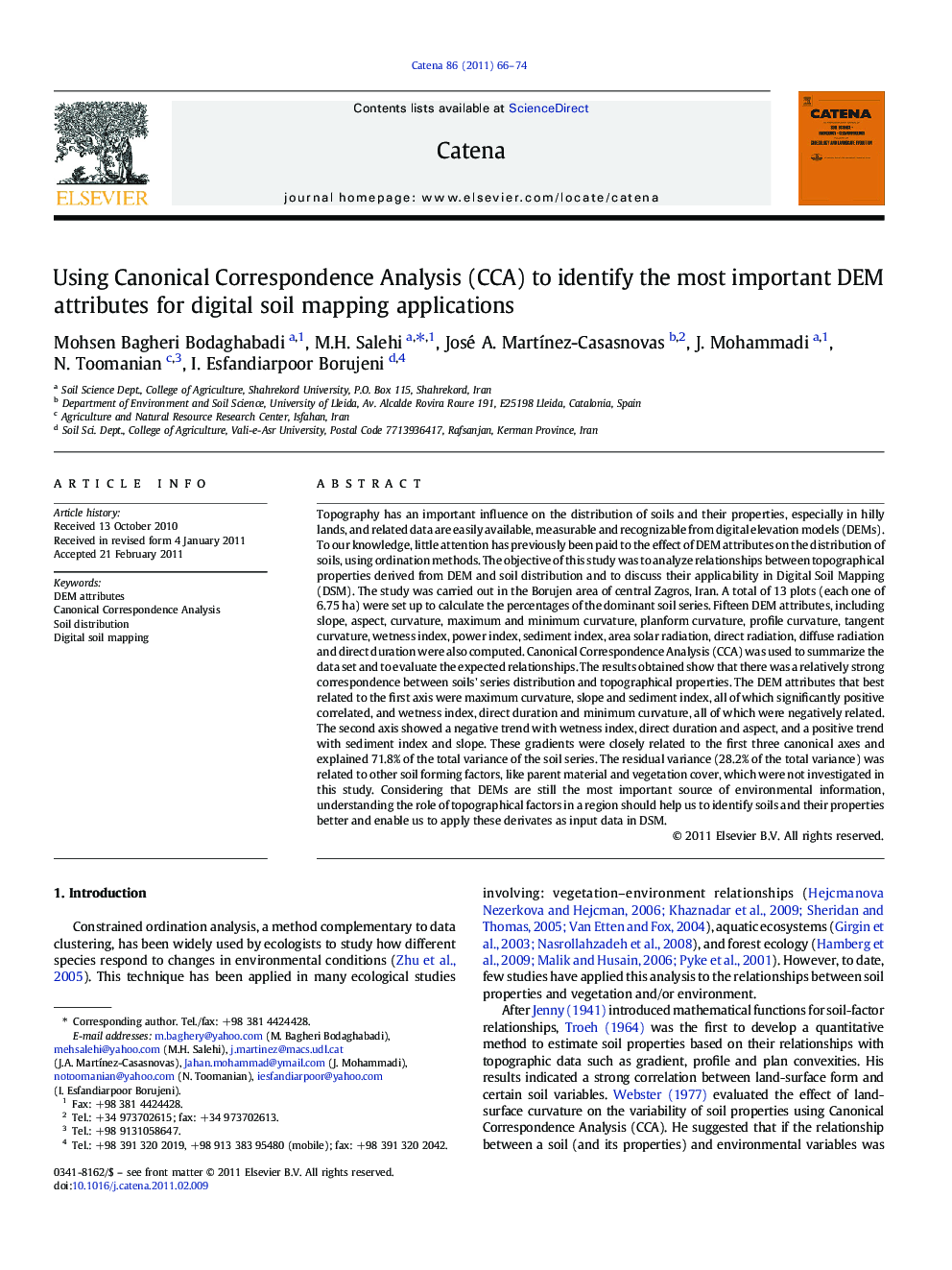| کد مقاله | کد نشریه | سال انتشار | مقاله انگلیسی | نسخه تمام متن |
|---|---|---|---|---|
| 4572035 | 1332144 | 2011 | 9 صفحه PDF | دانلود رایگان |

Topography has an important influence on the distribution of soils and their properties, especially in hilly lands, and related data are easily available, measurable and recognizable from digital elevation models (DEMs). To our knowledge, little attention has previously been paid to the effect of DEM attributes on the distribution of soils, using ordination methods. The objective of this study was to analyze relationships between topographical properties derived from DEM and soil distribution and to discuss their applicability in Digital Soil Mapping (DSM). The study was carried out in the Borujen area of central Zagros, Iran. A total of 13 plots (each one of 6.75 ha) were set up to calculate the percentages of the dominant soil series. Fifteen DEM attributes, including slope, aspect, curvature, maximum and minimum curvature, planform curvature, profile curvature, tangent curvature, wetness index, power index, sediment index, area solar radiation, direct radiation, diffuse radiation and direct duration were also computed. Canonical Correspondence Analysis (CCA) was used to summarize the data set and to evaluate the expected relationships. The results obtained show that there was a relatively strong correspondence between soils' series distribution and topographical properties. The DEM attributes that best related to the first axis were maximum curvature, slope and sediment index, all of which significantly positive correlated, and wetness index, direct duration and minimum curvature, all of which were negatively related. The second axis showed a negative trend with wetness index, direct duration and aspect, and a positive trend with sediment index and slope. These gradients were closely related to the first three canonical axes and explained 71.8% of the total variance of the soil series. The residual variance (28.2% of the total variance) was related to other soil forming factors, like parent material and vegetation cover, which were not investigated in this study. Considering that DEMs are still the most important source of environmental information, understanding the role of topographical factors in a region should help us to identify soils and their properties better and enable us to apply these derivates as input data in DSM.
Research Highlights
► There is strong correspondence between soils' series distribution and DEM attributes.
► Ordination methods can be used for landscape analysis.
► CCA results contribute to make the delineation of map units faster and more precise.
Journal: CATENA - Volume 86, Issue 1, July 2011, Pages 66–74